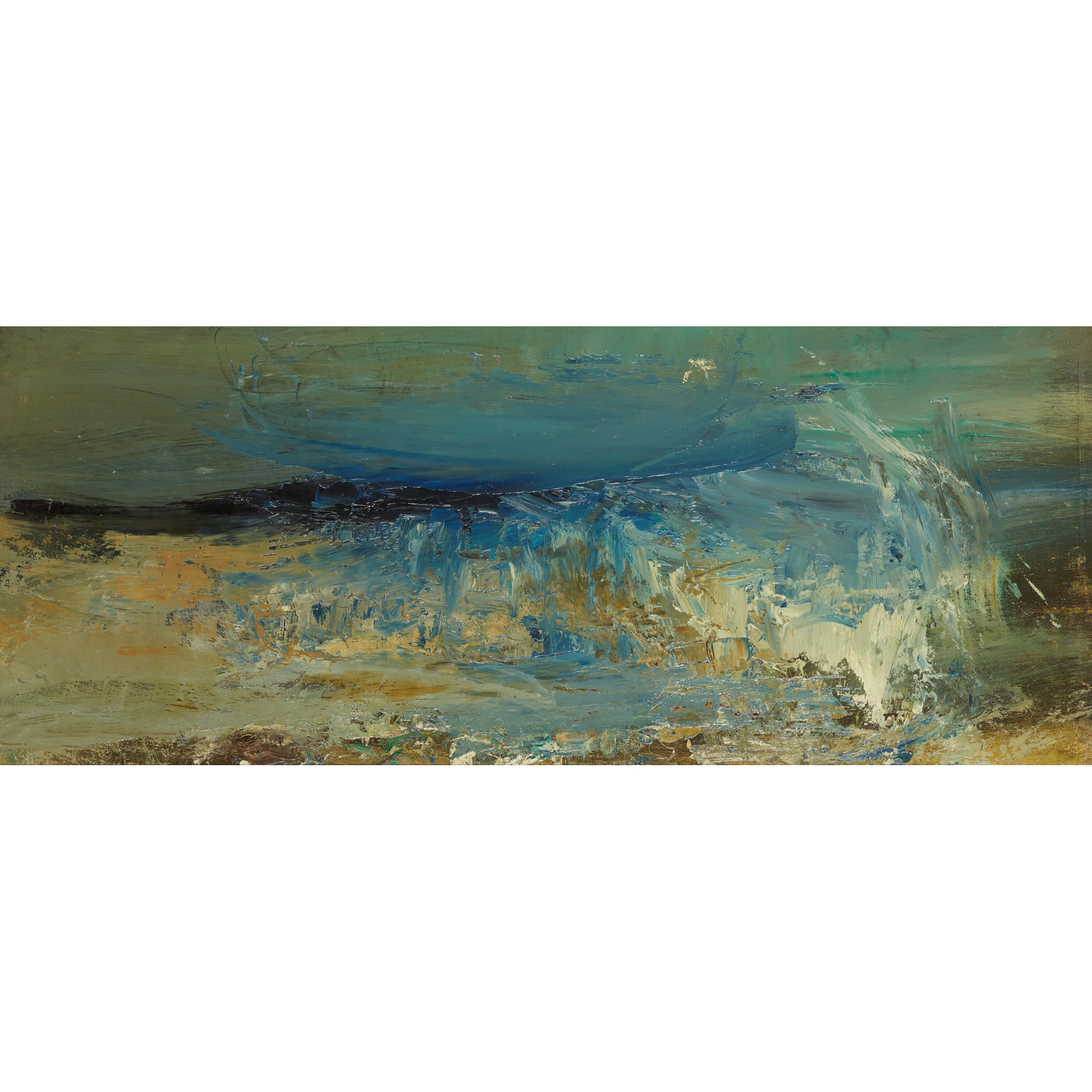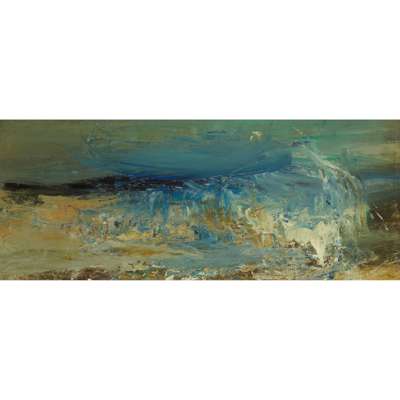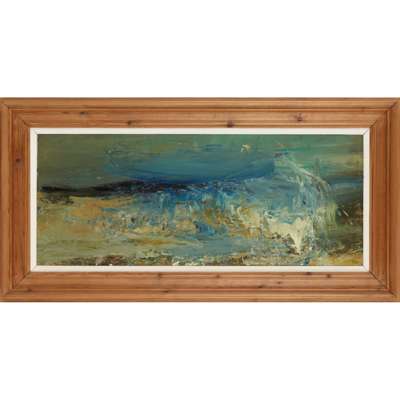
Lot 163

JOAN EARDLEY R.S.A. (SCOTTISH 1921-1963) §
THE SEA NO.5








Scottish Paintings & Sculpture
Auction: Evening Sale: 08 June 2023 | From 18:00
Description
Signed and dated '63 verso, oil on board
Dimensions
30cm x 69.5cm (11.75in x 27.5in)
Provenance
Provenance:
Roland, Browse and Delbanco, London
Acquired by the great-aunt of the present owner
Footnote
Note: Eardley’s first visited Catterline in 1951 and the village became a new stimulus where she could depict the immensities of nature in the open air, painting and sketching 'on the spot' in all seasons, weather conditions and times of day.
As Patrick Elliott has explained
Catterline was not a picturesque Highland village…but a working harbour with boats, fishing nets and fields of wheat, barley and oats. People may be absent from Eardley’s Catterline paintings, but their presence is felt.’ (Patrick Elliott and Anne Galastro, Joan Eardley: A Sense of Place, Edinburgh 2016, p.10)
Eardley made frequent painting trips to Catterline between 1952 and 1954, before renting the small cottage at No. 1 South Row. She thereafter split her time between Glasgow and the village. Whilst keeping No.1 as a store, Eardley went on to purchase No. 18 South Row in 1959. Her relationship with the immediate area deepened and in 1961 Eardley declared:
When I’m painting in the north-east I hardly ever move out of the village…I find that the more I know of the place, or of one particular spot, the more I find to paint…I don’t think I’m painting what I feel about scenery, certainly not scenery with a name; because that is the north-east, just vast wastes, vast seas, vast areas of cliff…well – you’ve just go to paint it.’ (As quoted in Elliott and Galastro, op.cit., p.11)
The Sea No.5 (Lot 163) is a bravura example of Eardley’s heroic efforts to express the movement and power of the sea at Catterline, albeit on an intimate scale. She turned to this subject in earnest after moving to No. 18 South Row, which had a spectacular view down to the bay and the ever-changing state of the North Sea.
Patrick Elliott has continued:
The worse the weather, the more Eardley wanted to paint on the beach…Her ear was attuned to the noise of the crashing waves: she could judge, from her bed, if it would be worth painting. If she was in Glasgow and heard reports of north-easterly gales brewing off the east coast, she would happily pack her bags and head north. (Elliott and Galastro, ibid., p.119)
Painted in 1963, not long before Eardley’s premature death, the elongated horizontal format of The Sea No. 5 mirrors the artist’s experience of the scene before her. Mere glimpses of the beach are visible as Eardley focussed on the sheer power of the natural phenomenon playing out in front of her easel. The highly-charged gestural and abstract technique was informed by European Tachiste painting and American Abstract Expressionism, placing Eardley at the cutting-edge of post-war British art.








